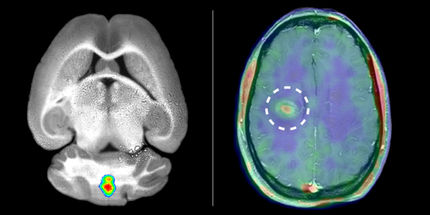Investigating kidney biomarkers to track lupus
Lupus, a chronic autoimmune disease, can wreak havoc on an affected individual's body through inflammation, pain and even damage of the skin, joints and organs.
To try to better understand how the disease begins and progresses, researchers at the University of Michigan investigated whether kidney biomarkers would signal lupus progression and signs of complications.
"Lupus patients have a high risk of kidney involvement, which can lead to end-stage renal disease requiring dialysis or transplant," says Emily Somers, Ph.D., Sc.M. , an associate professor of internal medicine (rheumatology), environmental health sciences and obstetrics and gynecology at U-M and a member of the U-M Institute for Healthcare Policy and Innovation. "In addition, there is a great need for biomarkers to detect early kidney involvement and to monitor progression."
Somers studies lupus outcomes and directs the Michigan Lupus Epidemiology and Surveillance (MILES) Program, which includes a cohort and biorepository registry of more than 650 lupus patients and controls from southeast Michigan.
"Lupus is a disease that predominantly affects women, often striking at the prime of life," Somers says. "Through the MILES Program, we previously showed that for black women, who are disproportionately affected by lupus, their risk of lupus is highest in their 20s. Forty percent of black females with lupus have kidney involvement, and 15 percent have end-stage renal disease."
In a new study, presented at the American Society of Nephrology's Kidney Week 2016 meeting in November, Somers teamed up with U-M colleagues Wenjun Ju, Ph.D., associate research scientist, and Matthias Kretzler, M.D., professor of nephrology, to measure the urinary epidermal growth factor in patients with lupus. Ju and Kretzler previously showed this protein to be a promising, noninvasive biomarker of kidney disease progression. Their team found a decrease in urinary epidermal growth factor protein was an indication of diminishing kidney function in people with chronic kidney disease.
In the study, the researchers extended these findings to show that levels of epidermal growth factor in the urine of 394 lupus patients provided improved ability over standard markers, such as protein-to-creatinine ratio, to distinguish those with kidney involvement from those without.
Moreover, they found that urinary epidermal growth factor, but not the standard markers, was associated with a global score representing lupus damage accumulated across all organ systems. This suggests that epidermal growth factor might play a role in overall lupus outcomes.
"Validating this biomarker as a way to monitor lupus severity and progression is an exciting step in piecing together the complexity of lupus," Somers says. "Ultimately we aim to enhance our ability to identify and treat those affected sooner, before the disease has caused even more complications."
In September, Somers was awarded a three-year, $3 million grant to continue the MILES Program, to further this research on risk factors for lupus and its progression.
Most read news
Topics
Organizations
Other news from the department science

Get the life science industry in your inbox
By submitting this form you agree that LUMITOS AG will send you the newsletter(s) selected above by email. Your data will not be passed on to third parties. Your data will be stored and processed in accordance with our data protection regulations. LUMITOS may contact you by email for the purpose of advertising or market and opinion surveys. You can revoke your consent at any time without giving reasons to LUMITOS AG, Ernst-Augustin-Str. 2, 12489 Berlin, Germany or by e-mail at revoke@lumitos.com with effect for the future. In addition, each email contains a link to unsubscribe from the corresponding newsletter.
Most read news
More news from our other portals
Last viewed contents
Clinical study started with Biotie's proprietary VAP-1 antibody in psoriasis patients

Cytomos welcomes new Director - £4 million investment sets path for commercialisation of groundbreaking cell analysis technology
Lowering pH regulates spider’s silk production

Tosoh Bioscience – Separation & Purification Expands European Headquarters in Griesheim, Germany - "This new facility will allow us to better serve our customers and explore new chromatography techniques and applications"

New pharmaceutically active substances from billions of newly combined molecules - “We’re seeing immense interest from industry and research, especially in cyclic molecules, which to date haven’t been accessible in large numbers”
Pharming's Ruconest(TM) for HAE granted European Marketing Authorization
Analytik Jena AG establishes subsidiary in Thailand

Stolze Science & Business Consulting - Hannover, Germany
Sartorius Stedim Biotech and Bosch Packaging Technology Announce Global Collaboration

Bacteria acquire resistance from competitors

HPV may lurk in your throat























































